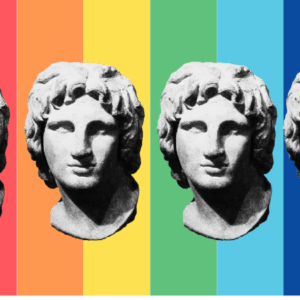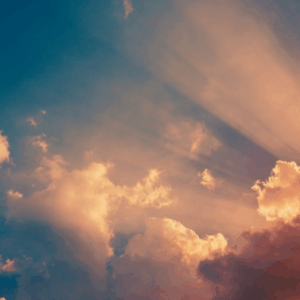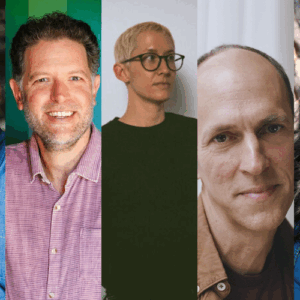Behind the wheel of the Landy, the engine sputters and chokes as I fire the ignition. A little puff of smoke in the clear air and we are off. Alex sits next to me and Renias sits up on a seat welded to the hood called the tracker seat. Cats often travel along game paths, and this spot allows Renias to see the tracks on the road as the dawn breaks.
With his coat and blanket wrapped against the morning cold, Renias looks like a mountain of a man, and he is. In his mid-fifties, muscular and strong, with thick forearms, wide shoulders, and a naughty smile, he is the embodiment of a likeable rogue. As if on cue, he turns in his seat and announces to us, “Buti, you know I have never been turned down by a woman. It is because I ate a lot of warthog meat as a child, gives my body a good smell.” He laughs intensely at his own joke. Ren often unleashes unsolicited fun facts.
As we drive out of the camp it’s still dark. The lights of the houses are beginning to blink on one by one. The other guides are just starting to stir and gather their provisions for their morning safaris. Shapes of men carrying rifles move like shadows in the predawn. A hyena walks through the camp looking guilty.
Five minutes out, the eastern sky ripens into a deep orange and the sun peeks over the horizon. Animals tend to move during these cool hours just after sunrise. The low light creates contrast on the ground, causing tracks to pop. The magnetism of these early hours is palpable. Later, the morning will warm, the cats will move to the shade, and the dawn energy will give way to a lazy heat. The witching hour in Africa is the middle of the day, still and hot and unmoving. The middle of the day is more a time for ghosts than midnight is.
We have only a few golden hours for tracking, and I can feel all of us eager to get on the trail. The dirt road we are on has not been driven since yesterday afternoon, so to Renias, sitting on the front, it is full of the information of animal movement: the tracks of a male leopard, a porcupine that trundled along dropping the odd quill, the fresh tracks of two male nyala antelope. Moments after seeing the tracks, we see the nyala beside us stalking around each other in a slow-motion dressage-like display to establish dominance. Ancient people would have watched their animal kin move, and those early imitations became the first dances. It’s easy to see the foundations of human culture when one is in the wild.
When you follow an animal’s trail you are linked to every person who has ever read the earth, every ancient culture that has walked a trail.
Watching Renias marking all of this from the front of the Land Rover, it’s easy for me to follow the trail of his ancestors back to the roots of science, back to the roots of art, when an ancient tracker saw a print in soft sand and realized that the abstract shape represented something. His first premises and deductions laid out in earth and interpreted as a means of survival.
Tracking shaped our evolving intelligence. Tracking was the first story our species ever told. And when you follow an animal’s trail you are linked to every person who has ever read the earth, every ancient culture that has walked a trail. Tracking is a birthright for every person, a memory of how to converse with nature.
We pass a herd of elephants feeding on the combretum veld. “They like to feed now. Do you know why?” Ren turns to ask me.
Before I can answer, he continues, “I think it’s because the branches have dew on them and so they like how juicy it is. That’s what I think.”
It’s a question I have never even thought to ask, and it contains an insight into a weakness of mine: I tend to just accept what I see. Ren always looks closer, he always asks why. He has a gift for examining the wallpaper of life.
Attention shapes the direction of the tracker’s life. We must turn our attention back to the wild self.
The art of the way the tracker sees is the way he can look at the thing he has seen a thousand times and always see something new. Renias has been out in the bush every morning of his life. He is fifty-five years old. And each day he looks at it anew and asks “Why?”
Two hippos cross our path on their way to a water hole. I breathe in and try to see them through new eyes. The bushveld is a landscape that holds feelings. There is an unseen presence, a feeling akin to the reverence conjured inside a beautiful cathedral.
Unseen, but felt. The intangible presence people long for. Wilderness is a space of relation, a place where the separation of language gives way to union.
I remember a time once in a forgotten part of the Zambezi Valley where I spent a week looking for one of the world’s rarest birds, the Pel’s fishing owl. I walked the riverbank each day looking up into shaded mahogany trees and trying to find its daytime perch. I found feathers and a horizontal branch that arched out over a still pool. Fish scales told me this was where the owl made its nighttime fishing spot. I was tracking a creature that never touched the ground. Yet to the tracker there were signs.
At night I lay awake in my tent, alone for miles in every direction, and heard the strange ghostlike call as the owl taunted me from the darkness.
The Pel’s fishing owl is a bird whose presence manifests itself only in the deepest wilderness. Light, loud sounds, or any of the things that come with the ways of people are against the owl’s nature. The owl is a symbol that you are in a wild place where few people will ever venture; where the environment conveys a nature deep within your own being. There’s a low-lying depression and anxiety plaguing modern life—a symptom of an undiagnosed homesickness to feel a belonging to the greater ecosystem and know ourselves in relation rather than isolation.
When I did find the bird in the late evening on the seventh day of my quest, it looked down at me with the blackest eyes I have ever seen. Eyes that seemed to penetrate into me with their darkness. In that moment, I knew something very important was happening. I am a person who likes secrets, and I am a person who has felt that I can only truly know myself in forgotten places. I was meeting something long forgotten by our world, something in the track of wilderness. A stillness that at one time would have been the most natural state of our collective being. It is in these encounters that wilderness brings us closer to places in ourselves that often go unvisited in modern life.
This is what I am always seeking. This is what I am trying to help others find.
The Landy bumps down the road past old leadwood and flowering knobthorn trees. Alex sits quietly beside me in the easy silence of old friendship. We cross a small drainage line called the masavene, the river of sand. Renias holds up his hand.
“Famba ka tsongo. Go slow,” he says.
After about 20 minutes of driving we are approaching Lex’s Pan, the area where Renias thinks the lion’s roar might have come from. Out of the drainage line, the land widens to an open dusty area with the water hole on its northern end. The ground has been churned into a fine white powder by animals coming to drink. The pan is a muddy hollow in the ground.
“Yima kwalani. Stop in this place,” says Ren as he hops
off the tracker seat.
“Let’s look,” says Alex.
We walk slowly across the ground. There are a myriad of tracks on the earth. Information laid down in layers, a sequence of events held by the earth. When I walk across it I see a simple two-dimensional drawing: the zebra tracks on top of the wildebeest, then some warthogs over them, all coming to drink.
For Renias, and perhaps for Alex too, I imagine this same scene is like walking through a three-dimensional hologram. Images of animals appear in an almost live order of appearance as the information before us is processed with incredible detail. A three-dimensional narrative of what transpired around the water hole plays in their mind’s eye. The track tells much more than just which animals were there. Small cameos of behavior are there to be interpreted: the gouged earth where a duiker bolted, the long regal steps of a slow-moving giraffe. Each track holds a mood, movement, and cadence.
When I was a boy, Renias would take me to a game path, the open trail created by the animals as they traveled from clearing to water.
“Walk down it and tell me what you see,” he would instruct.
I would walk down the trail and see the tracks of a herd of impala and then the massive four-toed foot of a hippo.
“Hippo and impala,” I would report. “Famba uya languta futhi.” Go look again.
The next time, I would notice under the hippo track a washed-out genet track, where a squirrel had bounded toward a tree, and where a hornbill had dust-bathed.
“Now walk and listen,” Renias would say. Then, “Walk, listen, and smell.”
Each time, there would be more information. It was like I was an instrument tuning myself to the information around me. Later in my life, I would come to realize that becoming aware of such information and the feelings it evokes—the people who are important to you, the things that bring you to life, the arrival of something meaningful—is its own kind of consciousness: track awareness. You can easily miss this information if you don’t know how to see. Track awareness is how attuned you are to what is around you. It is recognizing a track when it appears. It is teaching yourself how to see what is important to you.
I remember another day as a teenager when the obsession for tracking was truly beginning to take me. We were tracking a lion through thick inhospitable terrain and a baked substrate. Ren was in a hurry to get home, so he figured it would be good to get the job done fast. He moved like a bullet on the trail. I remember breaking into a run at times to keep up with him. He circled tracks with his stick as we went, but even then, they remained invisible to me. “You must train yourself to see your track,” he said.
In the hour and a half it took us to find the lion, I couldn’t make out one clear track. Where else in my life was there a path that I was missing? The implications felt profound.
I was struck by this as a tracker, but later when I began to coach and work with people in ceremony, it took on an entirely new depth. The idea that life is full of information. “You must train yourself to see what you are looking for.” Part of why this isn’t as simple as it sounds is that it’s not rational. You can’t think your way to a calling. Finding what is uniquely yours requires more than rationality. You have to learn how your body speaks. You have to learn how you know what you know. You have to follow the inner tracks of your feelings, sensations, and instincts, the integrity and truth that are deeper than ideas about what you should do. You have to learn to follow a deeper, wiser, wilder place inside yourself.
Shoulds are full of traps—traps laid by society and your limited rules for yourself. No wild animal has ever participated in a should.
Track awareness is the ability to read the field of life with discernment and yet also know your inner landscape. Everything in the natural world knows how to be itself. Trees know how to greet the spring with buds, and bees are drawn naturally to flowers. Leopards from birth know they are keepers of solitude, while lions are made for the pride. We are a part of nature, and inside each of us is a wild self that knows deeply what it is meant to do. Inside each of us is a natural innate knowledge of why we are here. Tracking is a function of directing attention, bringing our awareness back to this subtle inner trail of the wild self, and learning to see its path.
Yet most of us have so much of the social conditioning of modern life that the track of the wild self has been lost. We live with our attention directed outward. We focus on the social cues of our culture. We look to others to define our path and value and purpose. We lose ourselves in shoulds.
Shoulds are full of traps—traps laid by society and your limited rules for yourself. No wild animal has ever participated in a should. What you know to do is deeper than that. No one can tell you what your track will be or how to know what calls you and brings you to life. That’s your work to do. But a great tracker can ask: How do you know you love something? How do you feel when you are fully expressing yourself? Learn that feeling and then start looking, not for the thing, but for the feeling. It’s there if you can tune yourself to it, if you can learn to see how the field of life is always speaking to you. Attention shapes the direction of the tracker’s life. We must turn our attention back to the wild self.
Renias does that now in the dust. He moves in ever-widening arcs, scanning the ground churned by the feet and hooves of hundreds of creatures. He is relaxed. There is no concern that he will miss it. He is not even concerned with finding it. He is completely open to the landscape around him.
Before he even becomes conscious that he has seen it, he reacts. Like a boxer whose body has a memory faster than conscious thought. Amidst the myriad of scuffmarks and hoofmarks, amidst dung and wood, amidst a million pixels of information, through all the noise in a wilderness the size of a small European country, he picks the track of the lion. He has put himself in range of the call, and now, almost magically, he has woven the thread of our lives across the faint thread of the lion’s trail.
He has seen what he is looking for. He has trained himself to see it. This is how we cut the track.
__________________________________
![]()
From The Lion Tracker’s Guide to Life by Boyd Varty. Used with the permission of HMH Books. Copyright © 2019 by Boyd Varty.
Boyd Varty
Boyd Varty is a certified Master Life Coach, author, and TED speaker who has spent the last ten years refining the art of using wilderness as a place for deep introspection and personal transformation. Having learned martial arts in Thailand, hiked through the jungles of the Amazon, and apprenticed to a renowned tracker from the Shangaan tribe, Boyd currently runs retreats that merge tracking, coaching, and storytelling into an experiential learning environment at Londolozi Game Reserve in South Africa, the sanctuary where he was born and raised.













